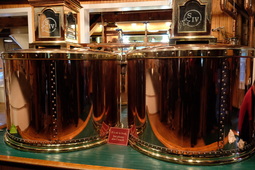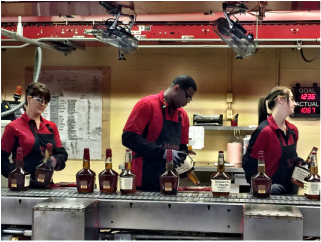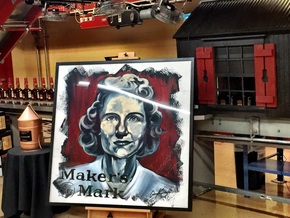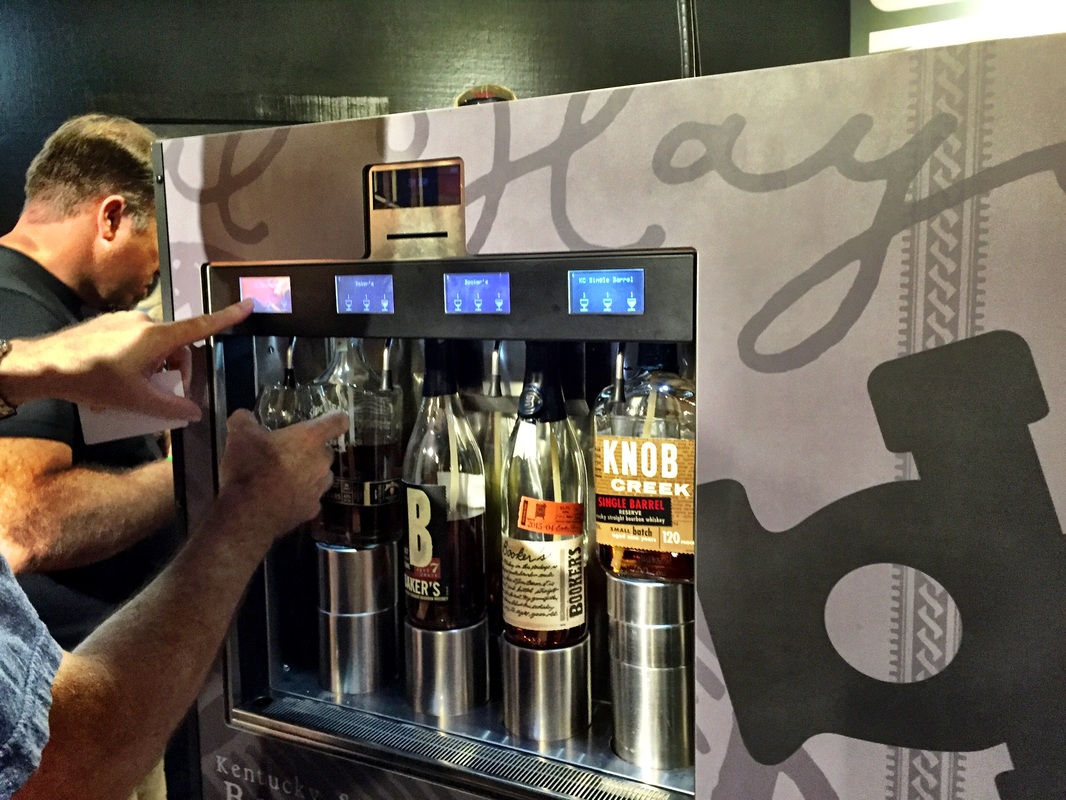 By 9 a.m., we were at Maker’s Mark’s door. Day 2 on our distillery tours of Kentucky, and we were ready. The Maker’s Mark distillery has a lot of Southern style – a charming house is the waiting area and you stand on a large front porch to the distillery to get the introduction. They were still polishing the huge copper stills when we arrived. Enormous mash tubs that will make 400 barrels of whiskey each bubbled and frothed. We got to dip our fingers through the spongy top layer to taste the fermenting beer, which has a sweet, tangy flavor. Maker’s Mark has over 400,000 barrels aging and they are building more warehouses to step up production with rising demand. “No bourbon distiller has enough bourbon,” said our guide.  Maker’s Mark caused a stir a couple of years ago when they announced they would drop the proof of the bourbon slightly (meaning add more water) because of a shortage, but they got such a backlash that they went back to the original proof. With an aged product like bourbon, most distillers seem to be creating more now and hoping the popularity continues by the time it is ready to drink. I volunteer to drink any leftovers. Because aging is such a key part of the flavor, different produces have different ideas on how to treat the barrels for maximum flavor. The warehouses look like big stacks of dusty barrels just sitting there, but inside the barrels, the liquid is heating up and getting pushed into the wood, then cooling down and retreating from the wood, flavoring and coloring the whiskey. Some distillers have temperature-controlled warehouses. Some mix barrels from the higher stacks, which get more heat, with barrels from the lower shelves to create the flavor profile. Some have even played with aging barrels on ships at sea. Maker’s Mark chooses to try to get all the barrels as close as possible to a similar flavor by rotating every barrel every three years, so that no barrel sits in the same place in the warehouse for its whole life.  Maker’s Mark features a great whiskey woman – Marge Samuels, wife of Maker’s Mark founder, Bill Samuels, Sr. She was influential in the marketing – the unique square bottle shape, the name, the signature red wax, and the hand-printed labels, which are still produced on a 1930’s printing press. According to Fred Minnick in the book Whiskey Women, she also wanted all the labels to be hand-torn, but Bill drew the line there – the bottles were already slowing down production. Marge’s marketing genius has made Maker’s Mark one of the most recognizable bottles in whiskey and was influential in making it so popular. The wax dipping actually is a tedious process. We watched the display dippers take the bottle, dip, and turn to get just the right drip. Our guide told us it goes faster in the main bottling building, where six dippers add wax to a seemingly impossible 23 bottles per minute.  From Maker’s Mark, we headed to the Jim Beam distillery. Jim Beam’s narrative is it is big. There’s no way around it – they produce 50 percent of the world’s bourbon, so they just embrace it. You start out in a two-story gift shop barn. There’s no buffalo or horses or hand-printed labels. It’s more the bad-ass bourbon image – trucker hats and ripped tanked tops. I saw some bikers pull up on their motorcycles for tours. The tour included a lot of what we had seen at other distilleries – just bigger. The sheer size of all the tanks and pipes is interesting. And the bottling plant is a full-on factory. It reminded me of when Mister Roger’s Neighborhood would go visit some place like a marble factory to show how stuff is produced. Only this was way better than a marble factory. Lines of bottles blurred past as they filled up with whiskey, got capped, labeled, and bottled in seeming seconds as the conveyor line carried bottles down and boxes up. Nothing done by hand in this place.
1 Comment
Jim Patten
10/12/2015 12:54:36 pm
Thanks for the posting Drake. It was interesting. I am a Jim Beam guy myself.
Reply
Your comment will be posted after it is approved.
Leave a Reply. |
Archives
November 2017
|


 RSS Feed
RSS Feed
